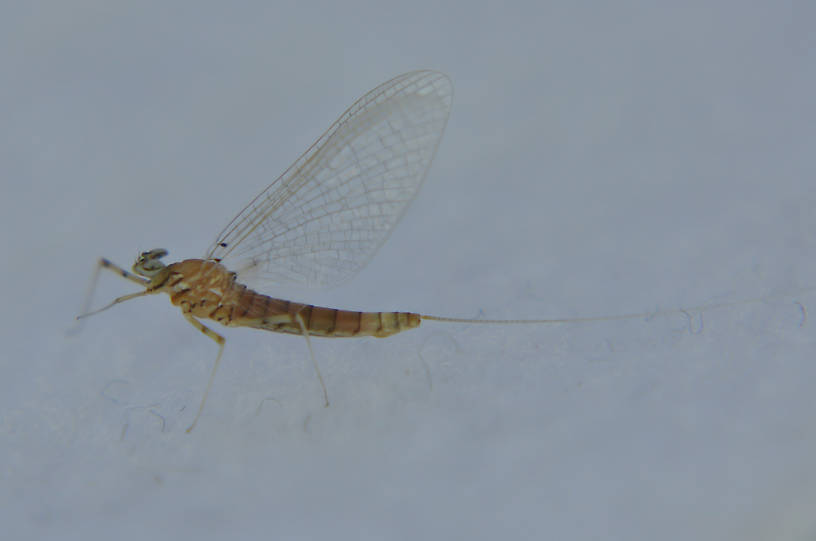
Blue-winged Olives
Baetis
Tiny Baetis mayflies are perhaps the most commonly encountered and imitated by anglers on all American trout streams due to their great abundance, widespread distribution, and trout-friendly emergence habits.
Featured on the forum

I caught this tiny larva without a case, but it seems to key pretty clearly to to Glossosomatidae. From there, the lack of sclerites on the mesonotum points to either Glossosoma or Anagapetus. Although it's difficult to see in a 2D image from the microscope, it's pretty clear in the live 3D view that the pronotum is only excised about 1/3 of its length to accommodate the forecoxa, not 2/3, which points to Glossosoma at Couplet 5 of the Key to Genera of Glossosomatidae Larvae.

Troutnut is a project started in 2003 by salmonid ecologist Jason "Troutnut" Neuswanger to help anglers and
fly tyers unabashedly embrace the entomological side of the sport. Learn more about Troutnut or
support the project for an enhanced experience here.
Updates from July 23, 2011
Updates from July 23, 2011
Closeup insects by Bnewell from the Touchet River in Washington

I associated this female with a male I collected one night later. For a great and informative discussion of all Epeorus species and other mayflies be sure and read, WESTERN MAYFLY HATCHES by R. Hafele and D. Hughes. They rate all of the western mayflies and they rate the hatch of this genus a 25 out of a possible 45 points based on several rating criterion. They provide insect photos, possible fly patterns and fly presentations. This is a great book.
Edit by Troutnut: Bob generally knows his IDs better than I do, but I think this one was misidentified as Epeorus longimanus. The darkened humeral crossvein is not supposed to be present in longimanus. I'm moving it up to Epeorus.
Edit by Troutnut: Bob generally knows his IDs better than I do, but I think this one was misidentified as Epeorus longimanus. The darkened humeral crossvein is not supposed to be present in longimanus. I'm moving it up to Epeorus.
Quick Reply
Related Discussions
Topic
Replies
Last Reply
0
Jul 15, 2011
by Bnewell
by Bnewell
3
Mar 30, 2012
by Entoman
by Entoman
5
May 10, 2011
by Flatstick96
by Flatstick96
3
Feb 12, 2009
by Creno
by Creno
Re: Lots of new pictures to check out, coming online tonight/tomorrow
In General Discussion by Troutnut
In General Discussion by Troutnut
1
Oct 4, 2006
by Dinerobyn
by Dinerobyn

